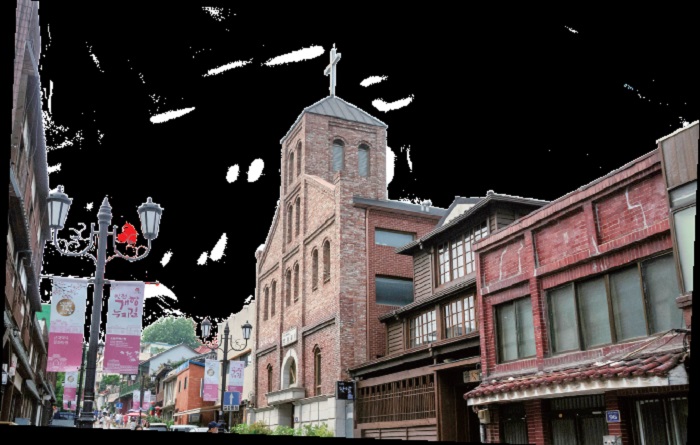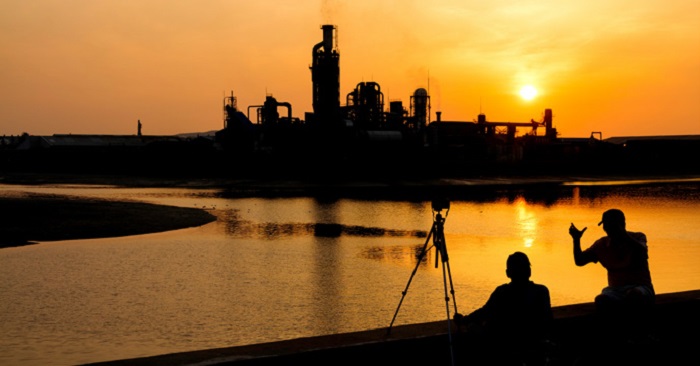-
 Korea.net's 24-hour YouTube channel
Korea.net's 24-hour YouTube channel- NEWS FOCUS
- ABOUT KOREA
- EVENTS
- RESOURCES
- GOVERNMENT
- ABOUT US
View this article in another language
- 한국어
- English
- 日本語
- 中文
- العربية
- Español
- Français
- Deutsch
- Pусский
- Tiếng Việt
- Indonesian
Going to Chinatown
Incheon’s best known tourist attraction is its Chinatown, Korea’s oldest and largest. Located just across from Incheon Station and easily recognized by the tell-tale pailou gate, Incheon’s Chinatown was founded in 1884 when traders from China’s Shandong Province settled in the port to deal in sundries, salt, cereals and alluvial gold. It’s a wonderfully atmospheric place of exotic, Chinese-style row houses, historic Chinese restaurants and Chinese temples and gardens. On the weekends, it’s almost always overrun with visitors. Chinatown’s best known, and best loved, contribution to Korean culture is jajangmyeon, a dish of noodles served in black bean sauce, based on a similar dish from Shandong Province. The Gonghwachun, a historic eatery where jajangmyeon was allegedly invented, is now a museum where you can learn about the dish and the history of Incheon’s Chinese community.

Old Foreign Concessions
In 1876, Korea signed the Treaty of Ganghwado, which opened the country to foreign trade. Incheon was one of several harbor towns to become so-called “open ports,” where international powers set up “concessions” where they established offices, homes and churches built in international styles. This history has left Incheon an architectural heritage that’s very unique in Korea.
The largest of the foreign concessions were those of Qing China, today’s Chinatown, and Japan. Those old concessions are now separated by a landmark flight of steps. In the old Japanese concession you’ll find stately bank buildings, historic warehouses and Japanese-style homes. Several of the old banks are now museums, while the warehouse complex is now a culture and arts center.
Western nations were also present in Incheon, their most important legacy being Freedom Park, Korea’s first Western-style park space. Here’s where you’ll find the city’s famous statue of Korean War hero General Douglas MacArthur. Other Western legacies worth visiting are the old Jemulpo Club, a colonial-style watering hole built by a Russian architect, the historic Nae-dong Anglican Church, and the beautiful Dap-dong Catholic Church.

Wolmido
Formerly an island, Wolmido is a hilly peninsula that juts out into Incheon Harbor. It has been a popular resort area since the early 20th century, and today its boardwalk, amusement park and seafood restaurants bustle with tourists from all over, especially on the weekends. At the top of the hill that dominates Wolmido is a park with a Korean garden and an observation tower that provides sweeping views over Incheon’s harbor.

Beautiful Sunsets
With its setting on the Yellow Sea, Incheon offers some pretty spectacular sunsets. Excellent views can be had from Yeonan Pier, Incheon’s main passenger boat pier. It’s a lively place: in addition to the endless passenger traffic, the pier also has a popular fish market and numerous other tourist attractions.
Incheon also has numerous offshore islands from which to take in the sunset. One of the best is Palmido, an island in the middle of the harbor. Home to Korea’s oldest lighthouse, built in 1903, the island offers views of the harbor and the spectacular Incheon Bridge.
*Article from Korea Magazine (August, 2014)
Incheon’s best known tourist attraction is its Chinatown, Korea’s oldest and largest. Located just across from Incheon Station and easily recognized by the tell-tale pailou gate, Incheon’s Chinatown was founded in 1884 when traders from China’s Shandong Province settled in the port to deal in sundries, salt, cereals and alluvial gold. It’s a wonderfully atmospheric place of exotic, Chinese-style row houses, historic Chinese restaurants and Chinese temples and gardens. On the weekends, it’s almost always overrun with visitors. Chinatown’s best known, and best loved, contribution to Korean culture is jajangmyeon, a dish of noodles served in black bean sauce, based on a similar dish from Shandong Province. The Gonghwachun, a historic eatery where jajangmyeon was allegedly invented, is now a museum where you can learn about the dish and the history of Incheon’s Chinese community.

Exotic buildings in the old Japanese concession.
Old Foreign Concessions
In 1876, Korea signed the Treaty of Ganghwado, which opened the country to foreign trade. Incheon was one of several harbor towns to become so-called “open ports,” where international powers set up “concessions” where they established offices, homes and churches built in international styles. This history has left Incheon an architectural heritage that’s very unique in Korea.
The largest of the foreign concessions were those of Qing China, today’s Chinatown, and Japan. Those old concessions are now separated by a landmark flight of steps. In the old Japanese concession you’ll find stately bank buildings, historic warehouses and Japanese-style homes. Several of the old banks are now museums, while the warehouse complex is now a culture and arts center.
Western nations were also present in Incheon, their most important legacy being Freedom Park, Korea’s first Western-style park space. Here’s where you’ll find the city’s famous statue of Korean War hero General Douglas MacArthur. Other Western legacies worth visiting are the old Jemulpo Club, a colonial-style watering hole built by a Russian architect, the historic Nae-dong Anglican Church, and the beautiful Dap-dong Catholic Church.

Incheon Chinatown (left) and the amusement park Wolmido
Wolmido
Formerly an island, Wolmido is a hilly peninsula that juts out into Incheon Harbor. It has been a popular resort area since the early 20th century, and today its boardwalk, amusement park and seafood restaurants bustle with tourists from all over, especially on the weekends. At the top of the hill that dominates Wolmido is a park with a Korean garden and an observation tower that provides sweeping views over Incheon’s harbor.

Sunset at Bukseong Pier
Beautiful Sunsets
With its setting on the Yellow Sea, Incheon offers some pretty spectacular sunsets. Excellent views can be had from Yeonan Pier, Incheon’s main passenger boat pier. It’s a lively place: in addition to the endless passenger traffic, the pier also has a popular fish market and numerous other tourist attractions.
Incheon also has numerous offshore islands from which to take in the sunset. One of the best is Palmido, an island in the middle of the harbor. Home to Korea’s oldest lighthouse, built in 1903, the island offers views of the harbor and the spectacular Incheon Bridge.
*Article from Korea Magazine (August, 2014)
Most popular
- First hearing-impaired K-pop act hopes for 'barrier-free world'
- Event 'K-Beauty Hang Out' draws hundreds in Philippines
- Ceremony in Seoul inducts 2,641 content creators of Korean culture
- 'Mad Max' director impressed by 'cinema-literate' Korean viewers
- Romanian presidential couple visits national cemetery













